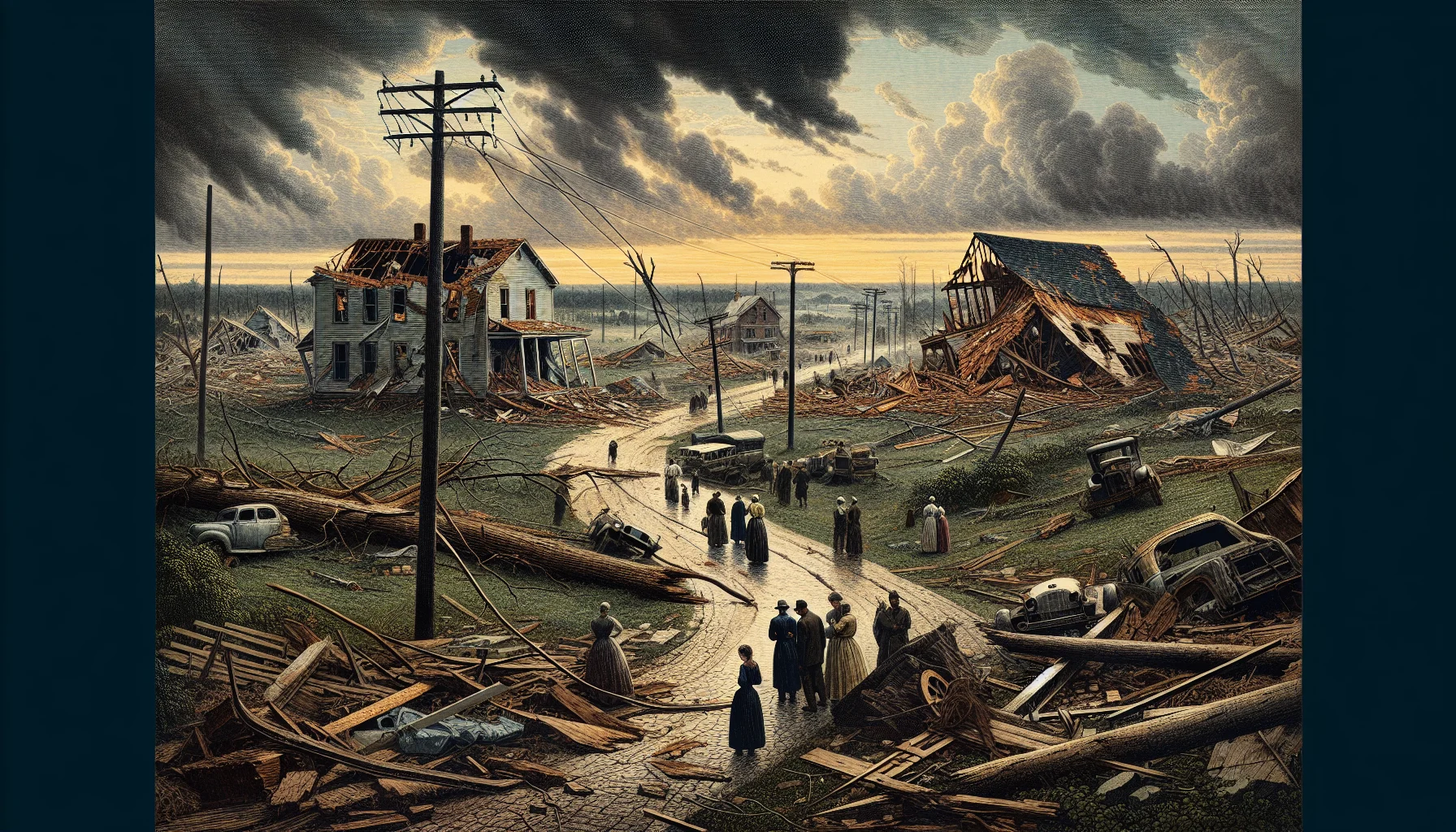
The 2011 Super Outbreak
by: The Calamity Calendar Team
April 27, 2011
A Prelude to Chaos
It was late April, and the skies were restless. Long before a single funnel cloud kissed the ground, the atmosphere itself seemed charged with a sense of urgency. The month had already proven tumultuous, with one severe weather alert following another. The setup was perfect—perfectly dangerous. A steadfast low-pressure system parked over the central U.S. was cozying up against warm, moist currents rising from the Gulf of Mexico. For meteorologists keeping a watchful eye, this confluence of elements could only mean one thing: tornadoes.
Yet even they couldn't foresee the full measure of what was to come.
Gathering Storms
April 25, 2011, dawned uneasily over Arkansas. By the end of the day, the state played unwilling host to the outbreak's opening act. Tornadoes carved their erratic paths through communities like Vilonia, leaving residents blinking in disbelief at the sky's wrath. These weren't mere weather anomalies; they were the prologue to a natural disaster.
The following day, the storm system journeyed eastward with a grim relentlessness that defied containment. Texas and Louisiana bore witness as the skies darkened and winds howled; then Mississippi and Tennessee were swept into the unfolding drama. Homes crumbled under the assault, and nature's fury became an unwelcome visitor that none could bar from entering.
The Unforgiving Apex
April 27 was different. It wasn't just another day of bad weather; it was a day that would etch itself into the heart of the nation. This was the outbreak's peak, when the sky seemed to yawn wide, hungry for havoc. The tornadoes that came forth were long-tracked and violent, with a determination that seemed almost personal.
Hackleburg and Phil Campbell, Alabama, bore the brunt of an EF5 tornado that tore through the land with a terrifying resolve. This was a whirlwind of unspeakable power, a force that reshaped both land and lives. Meanwhile, Tuscaloosa and Birmingham were similarly besieged by an EF4 tornado whose impact was catastrophic, obliterating whole neighborhoods.
Thanks for subscribing!
In mere moments, communities were torn asunder. The death toll mounted and the landscape, once familiar and comforting, became alien.
Scars of Destruction
As the outbreak diminished and the sky finally calmed on April 28, the Southern, Midwestern, and Eastern United States faced a reality stark and unforgiving. The cost of April's fury was staggering: more than $10.2 billion in damage. Homes were reduced to kindling and communities, to shadows of their former selves. Alabama, pummeled more than most, grieved the deeply personal loss of 238 lives out of the 324 taken.
Emergency responders pushed through the rubble to find the injured and account for the missing. A tapestry of human response unfolded. National Guard units and local response teams joined hands, working tirelessly to pull survivors from the wreckage and deliver aid to the newly homeless.
A Community United, A Nation Responds
In the aftermath, there was no time to pause. The country's fabric was strained, yet it did not tear. Across Alabama and beyond, communities became battlegrounds of hope. Neighbors sheltered each other in churches and schools, finding refuge wherever walls still stood.
Federal and state governments moved swiftly to allocate disaster relief funds. It wasn't just about clearing debris—it was about rebuilding lives and structures safer and stronger. The devastation gave rise to a renewed focus on weather preparation, underscoring the need for more reliable early warning systems to better predict when and where tornadoes would strike.
Lessons and Legacies
The legacy of the 2011 Super Outbreak is not just in what was destroyed but also in how it reshaped resilience. Since then, significant advancements have been made in weather technology. Enhanced radar systems now scan the horizon for signs of the next big storm, and forecasting models have been sharpened to better anticipate the fury of tornadoes.
There's also a broader dialogue now about climate variability and its role in shaping such deadly outcomes. The science isn't yet settled, but the conversation continues—a testament that we must learn from history if we are to safeguard our future.
What Remains
Years later, the scars of the 2011 Super Outbreak remain visible in the rebuilt homes and in the lives forever altered. Communities continue their march forward, cherishing and commemorating the resilience and spirit that rose from those dark days. It's a story of human spirit enduring in the face of nature's rawest power—a reminder that, amid destruction, the will to rebuild can forge hope out of despair.
Stay in the Loop!
Become a Calamity Insider and get exclusive Calamity Calendar updates delivered straight to your inbox.
Thanks! You're now subscribed.